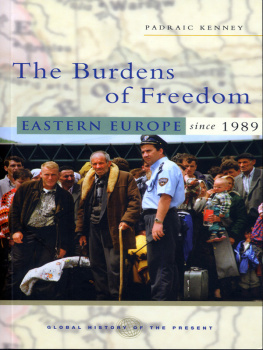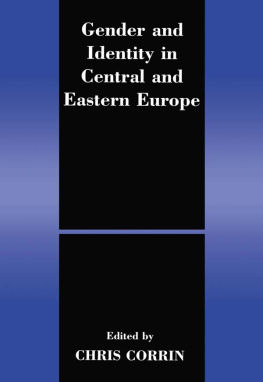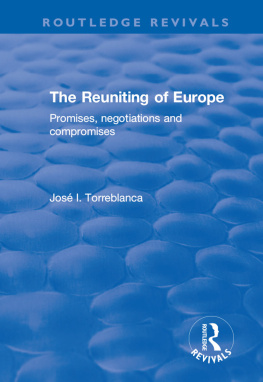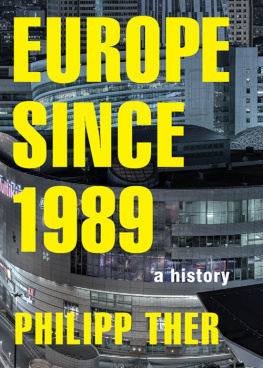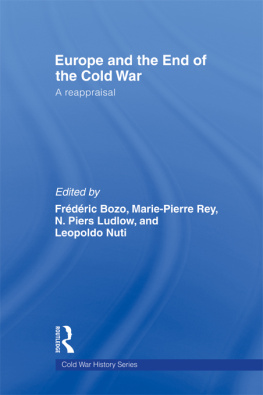Kenney - The Burdens of freedom: eastern Europe since 1989
Here you can read online Kenney - The Burdens of freedom: eastern Europe since 1989 full text of the book (entire story) in english for free. Download pdf and epub, get meaning, cover and reviews about this ebook. City: Black Point;N.S;Europa de lEst;Europa de lest, year: 2006, publisher: National Book Network International;Fernwood Pub, genre: Politics. Description of the work, (preface) as well as reviews are available. Best literature library LitArk.com created for fans of good reading and offers a wide selection of genres:
Romance novel
Science fiction
Adventure
Detective
Science
History
Home and family
Prose
Art
Politics
Computer
Non-fiction
Religion
Business
Children
Humor
Choose a favorite category and find really read worthwhile books. Enjoy immersion in the world of imagination, feel the emotions of the characters or learn something new for yourself, make an fascinating discovery.
The Burdens of freedom: eastern Europe since 1989: summary, description and annotation
We offer to read an annotation, description, summary or preface (depends on what the author of the book "The Burdens of freedom: eastern Europe since 1989" wrote himself). If you haven't found the necessary information about the book — write in the comments, we will try to find it.
The Burdens of freedom: eastern Europe since 1989 — read online for free the complete book (whole text) full work
Below is the text of the book, divided by pages. System saving the place of the last page read, allows you to conveniently read the book "The Burdens of freedom: eastern Europe since 1989" online for free, without having to search again every time where you left off. Put a bookmark, and you can go to the page where you finished reading at any time.
Font size:
Interval:
Bookmark:

GLOBAL HISTORY OF THE PRESENT
Series editor | Nicholas Guyatt
In the Global History of the Present series, historians address the upheavals in world history since 1989, as we have lurched from the Cold War to the War on Terror. Each book considers the unique story of an individual country or region, refuting grandiose claims of the end of history, and linking local narratives to international developments.
Lively and accessible, these books are ideal introductions to the contemporary politics and history of a diverse range of countries. By bringing a historical perspective to recent debates and events, from democracy and terrorism to nationalism and globalization, the series challenges assumptions about the past and the present.
Published
Thabit A. J. Abdullah, Dictatorship, Imperialism and Chaos: Iraq since 1989
Timothy Cheek, Living with Freedom: China since 1989
Alexander Dawson, First World Dreams: Mexico since 1989
Padraic Kenney, The Burdens of Freedom: Eastern Europe since 1989
Stephen Lovell, Destination in Doubt: Russia since 1989
Forthcoming
Alejandra Bronfman, On the Move: The Caribbean since 1989
James D. Le Sueur, Between Terror and Democracy: Algeria since 1989
Mark LeVine, Impossible Peace: Israel/Palestine since 1989
Hyung Gu Lynn, Bipolar Orders: The Two Koreas since 1989
Nivedita Menon and Aditya Nigam, Power and Contestation: India since 1989
Helena Pohlandt-McCormick, What Have We Done? South Africa since 1989
Nicholas Guyatt is assistant professor of history at Simon Fraser University in Canada.
About the author
Padraic Kenney divides his time between Wrocaw, Poland and the University of Colorado at Boulder, where he is professor of history. He is the author of several books on Eastern European history and politics, including A Carnival of Revolution: Central Europe, 1989 (2002). His next book will examine the experience of political prisoners in twentieth-century world history.
The Burdens of Freedom: Eastern
Europe since 1989
Padraic Kenney
Fernwood Publishing
NOVA SCOTIA
Zed Books
LONDON | NEW YORK
The Burdens of Freedom: Eastern Europe since 1989 was first published in 2006
Published in Canada by Fernwood Publishing Ltd, 32 Oceanvista Lane, Site 2a, Box 5, Black Point, Nova Scotia B0J 1B0
This ebook edition was first published in 2013
Published in the rest of the world by Zed Books Ltd, 7 Cynthia Street, London n1 9 JF , UK and Room 400, 175 Fifth Avenue, New York, NY 10010, USA
Copyright Padraic Kenney, 2006
The right of Padraic Kenney to be identified as the author of this work has been asserted by him in accordance with the Copyright, Designs and Patents Act, 1988.
No part of this publication may be reproduced, stored in a retrieval system or transmitted, in any form or by any means, electronic or otherwise, without the prior permission of the publisher.
Cover designed by Andrew Corbett
Set in OurType Arnhem and Futura Bold by Ewan Smith, London
Index <>
A catalogue record for this book is available from the British Library.
US CIP data are available from the Library of Congress.
Library and Archives Canada Cataloguing in Publication:
Kenney, Padraic, 1963
The burdens of freedom : Eastern Europe since 1989 / Padraic Kenney.
ISBN 1-55266-205-5
1. Europe, Eastern--History--1989-. 2. Europe, Eastern--Politics and government--1989-. I. Title.
DJK 51. K 464 2006 947.0009049 C 2006-902638-6
All rights reserved
No part of this publication may be reproduced, stored in a retrieval system or transmitted, in any form or by any means, electronic or otherwise, without the prior permission of the publisher.
ISBN 9 781 84813 620 5
Contents
Acknowledgments
The very existence of this book owes a great deal to series editor Nicholas Guyatt. His prompting led me to consider and accept the project, and he has been an extraordinarily thoughtful and helpful reader throughout. My colleagues Elizabeth Dunn and Jacek Lubecki, and my father Michael Kenney, also read drafts and offered excellent suggestions. Students in a seminar I taught in the International Affairs Program at Colorado in the spring of 2005 helped me to work out many of the ideas in this book. Thanks to all of you.
Much of this book took shape with a view of the Park Nowowiejski in Wrocaw. It owes a great deal to colleagues, friends and family across Eastern Europe. I am grateful to my wife, Izabela, for her support and encouragement, and to Fredzio Zapaka and all his friends.
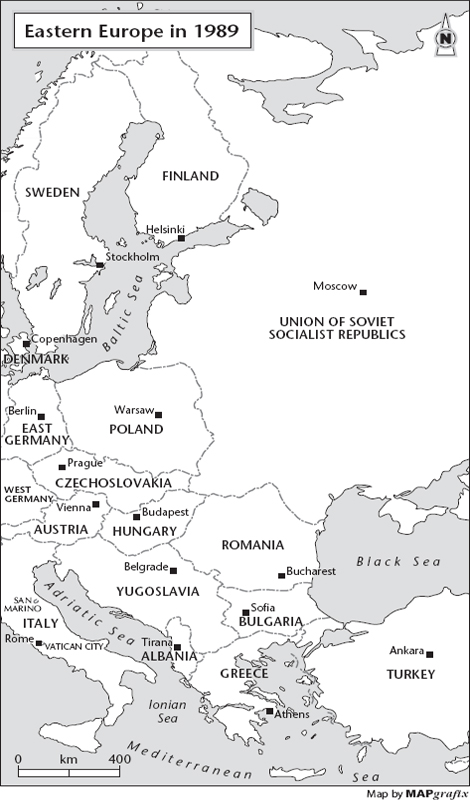

Introduction: the shock of the new
Eastern Europe: whats in a name? One can start quite a debate over the proper terminology for the region that is the subject of this book. East-Central Europe, Central and Southeast (or Balkan?) Europe, West-Central Europe, Mitteleuropa Perhaps finding the right combination of terms makes no difference. Yet these can be fighting words, too. I first learned this in Moscow, in 1984. Sitting in a beer hall near our dormitory, I burbled enthusiastically to my Slovak friend Jano about a course I had taken at Harvard on East European literature. East European literature what could that be? he wondered. Kundera! Ki! Miosz! I chattered on until he cut me off, somewhat grimly: Czechoslovakia is Western Europe. Eastern Europe thats India.
Janos geography was clearly of the extreme variety. But any sharp-eared visitor to the region today will notice the same chill around the words Eastern Europe or Balkan. They connote backwardness, or Russianness. Central is the preferred term or, better yet, just Europe.
Yet Eastern is unavoidable in this book, as a term to unite what? The fifteen countries from Estonia to Macedonia that receive attention here share a few traits. All have definitively broken away not only from Soviet-style communism, but from the Russian sphere of influence, something that cannot yet be said about Ukraine, or Moldova, or Belarus. All have either joined the European Union, are slated to join within a year or two, or are at least considered potential candidates, with some hope of beginning membership negotiations someday. Of course, in other ways these fifteen have little in common, while the borders of the region are sometimes indistinct. The Czech Republic is much more like its neighbor Austria than it is like Albania; Lithuanians and Ukrainians have many common experiences that even a Pole born and raised under communism would find unfamiliar. But overall, the paths these fifteen are taking, and the difficulties they face, are quite similar economically, culturally, politically.
Now for another caveat: Fifteen countries, no matter how comparable, are a lot for a book of any length. Nor would it be interesting, even for the specialist, to follow each of them in detail, one after another, over nearly two decades of post-communism, whether in alphabetical or some other order. The approach in this book, then, is synecdochal: while there are very many interesting stories about every country, in this book a part must stand for the whole. The Lithuanian commemoration of communism may be as compelling as the Hungarian, or Czech corruption scandals as important as those in Albania, but one simply has to choose. To be clear, though: Choice is made not simply for brevity, but more because what is interesting are the overall trends, which are as well illustrated with one or two examples as with a dozen.
Next pageFont size:
Interval:
Bookmark:
Similar books «The Burdens of freedom: eastern Europe since 1989»
Look at similar books to The Burdens of freedom: eastern Europe since 1989. We have selected literature similar in name and meaning in the hope of providing readers with more options to find new, interesting, not yet read works.
Discussion, reviews of the book The Burdens of freedom: eastern Europe since 1989 and just readers' own opinions. Leave your comments, write what you think about the work, its meaning or the main characters. Specify what exactly you liked and what you didn't like, and why you think so.

